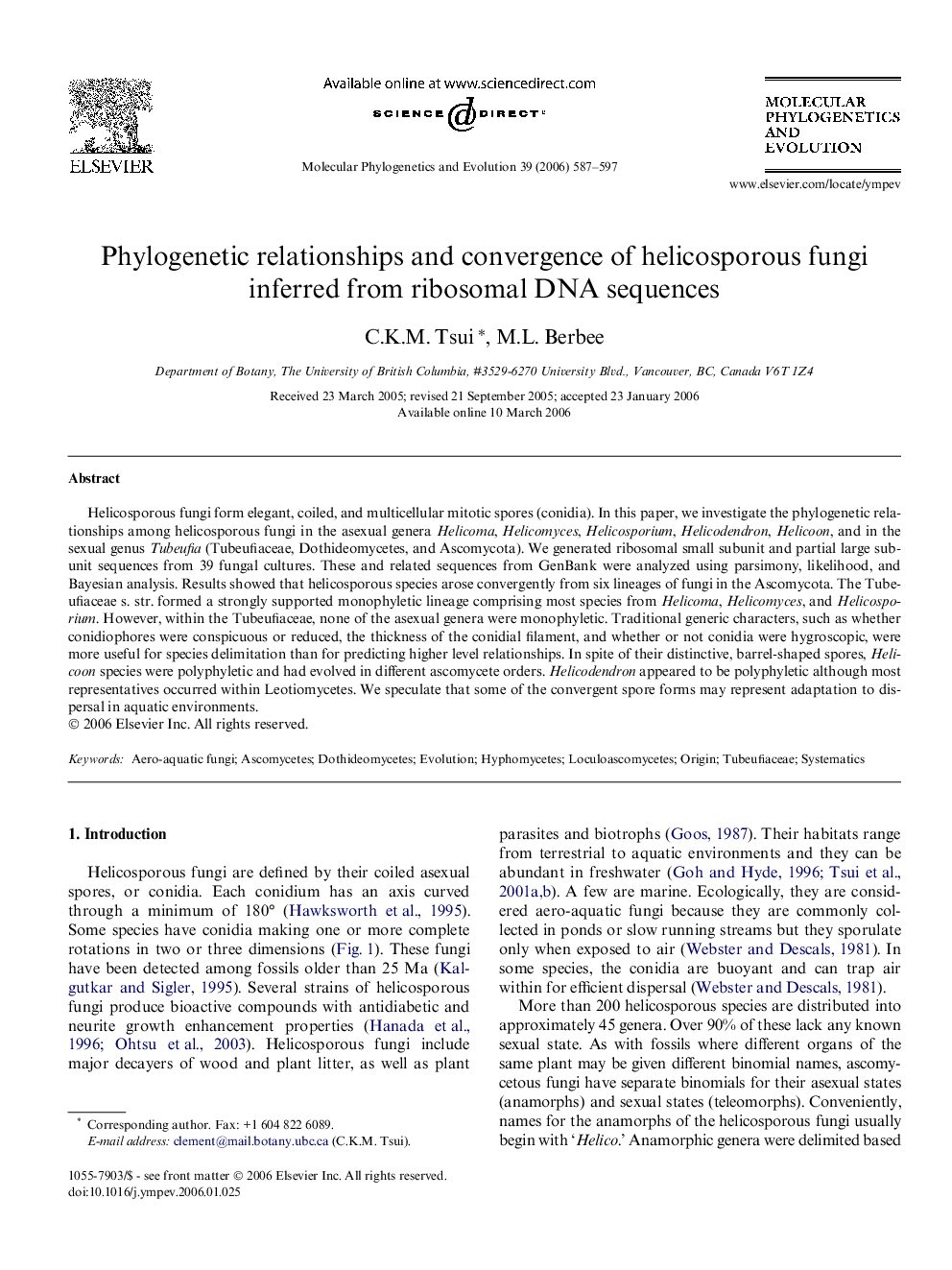| کد مقاله | کد نشریه | سال انتشار | مقاله انگلیسی | نسخه تمام متن |
|---|---|---|---|---|
| 2835994 | 1164360 | 2006 | 11 صفحه PDF | دانلود رایگان |

Helicosporous fungi form elegant, coiled, and multicellular mitotic spores (conidia). In this paper, we investigate the phylogenetic relationships among helicosporous fungi in the asexual genera Helicoma, Helicomyces, Helicosporium, Helicodendron, Helicoon, and in the sexual genus Tubeufia (Tubeufiaceae, Dothideomycetes, and Ascomycota). We generated ribosomal small subunit and partial large subunit sequences from 39 fungal cultures. These and related sequences from GenBank were analyzed using parsimony, likelihood, and Bayesian analysis. Results showed that helicosporous species arose convergently from six lineages of fungi in the Ascomycota. The Tubeufiaceae s. str. formed a strongly supported monophyletic lineage comprising most species from Helicoma, Helicomyces, and Helicosporium. However, within the Tubeufiaceae, none of the asexual genera were monophyletic. Traditional generic characters, such as whether conidiophores were conspicuous or reduced, the thickness of the conidial filament, and whether or not conidia were hygroscopic, were more useful for species delimitation than for predicting higher level relationships. In spite of their distinctive, barrel-shaped spores, Helicoon species were polyphyletic and had evolved in different ascomycete orders. Helicodendron appeared to be polyphyletic although most representatives occurred within Leotiomycetes. We speculate that some of the convergent spore forms may represent adaptation to dispersal in aquatic environments.
Journal: Molecular Phylogenetics and Evolution - Volume 39, Issue 3, June 2006, Pages 587–597